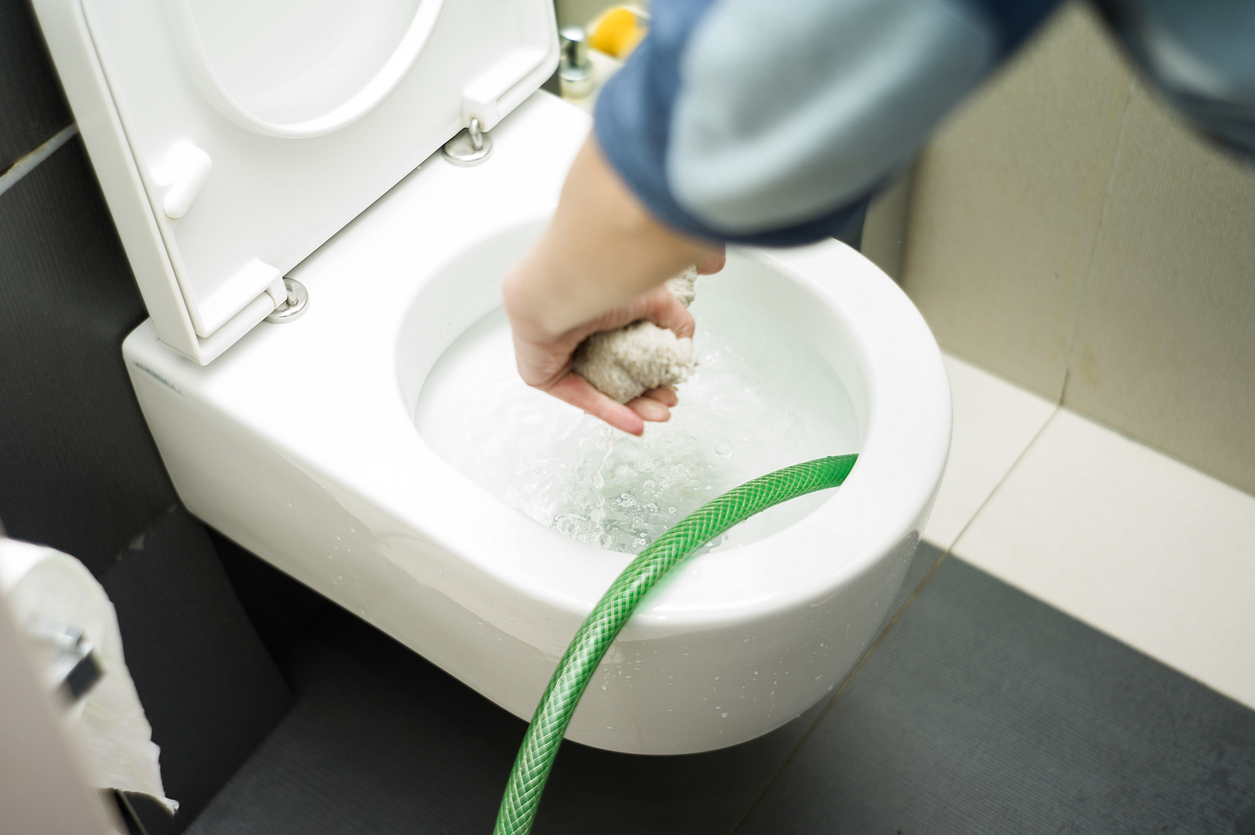It’s About to Go Down: Different Ways to Unclog a Toilet (Part 2)
It’s About to Go Down: Different Ways to Unclog a Toilet (Part 2)
I’ve got a confession to make: A few weeks ago, I was on the verge of going nuts. Why? Because I got enough of dealing with downright messy clogged toilets.
Believe it or not, there’s nothing worse than trying to unclog a toilet (especially one with poop – eww!).
Thankfully, I came across a few easy and simple solutions that saved me the trip to a mental asylum.
Want to know more?
#3. A Drain Cleaner

Start by heating half a gallon of water. If the toilet clogs quickly as a consequence of flushing too much “trash”, a mixture of hot water, baking soda, and vinegar can do the job just as effectively as a commercial drain cleaner. (Oh and it works in half cases)
Boil around half a gallon of water, then set it aside to cool while you add the remaining ingredients to the toilet bowl.
Remember: At least half a gallon is required. A tiny amount of water will not work because it lacks the necessary power to drive through the blockage. The water should be no hotter than a cup of hot tea that you can easily consume. Very hot water can fracture porcelain, therefore it should not be boiling. You want to increase the temperature of the water that is flowing through or pressing against the blockage.
Then, one cup of baking soda and at least two cups of vinegar should be poured into the toilet. Baking soda and vinegar generate a chemical reaction that aids in the removal of blockages. Although distilled white vinegar is frequently used, any sort of vinegar will suffice. The mixture will bubble up a lot.
Now, if you don’t have baking soda or vinegar on hand, try a couple of squirts of dish soap in the toilet bowl. The soap may aid in the removal of the blockage. However, it is important to note that this approach is unlikely to be effective for blockages caused by a hard impediment, such as your kid’s newly bought toy.
The next step consists of filling the dish halfway with boiling water. Pour it from the waist down, rather than straight up to the rim. The force of the water flowing into the basin might aid in the removal of the blockage. Allow the mixture to sit overnight. The water should have drained by the morning.
Side Note: This DIY drain cleaner should be effective in removing blockages caused by organic debris. If the water does not flush after the second attempt, you may have a hard blockage creating the clog. Use a wire coat hanger or a drain snake if necessary.
#4. How About a Plumbing Snake?

A plumbing snake can be purchased or borrowed.
And, for all dummies not knowing what’s a plumbing snake (also known as a “flexible cleaning tool” or “auger”), let me tell you that it is a flexible coil of wire that can “snake” around the bends of a drain and reach deeper than a wire. A “closet auger,” which is particularly intended to remove toilet clogs without harming or ruining the bowl, is the ideal snake. A closet auger would most likely be used by a plumber.
So, here’s what you need to do:
Step 1: One end of the snake should be inserted into the drain. Push down, moving the snake farther into the drain until you encounter an obstacle.
Step 2: Twist the snake and force it past the obstacle. The aim is to disassemble the barrier into smaller bits that can pass through the pipes. It may take a couple of minutes of maneuvering to get around the obstacle. After the water has drained, flush the toilet to observe whether it empties as rapidly as usual.
Step 3: Reverse snake phase – it could be required to remove the toilet and run the snake in the opposite way. This is especially true for hard blockages that an inquisitive youngster may have flushed. Contact a plumber if the clog is known to be difficult and you are not comfortable removing and changing the toilet.




[…] Having a job is of paramount importance these days. Indeed, there are many jobs in the world. The fact…
[…] Personally, I need a hot shower whether we are in winter or summer because I don’t feel clean otherwise,…
[…] Sound off in the comments section below, and tell us what you want to read next and if you…
[…] unfortunately, when it concerns a major plumbing issue, a botched job might end up causing a lot of harm…
[…] overestimate your talents, either. Sure, some simple jobs (like prevention!) can be done by a handy homeowner. But don’t…